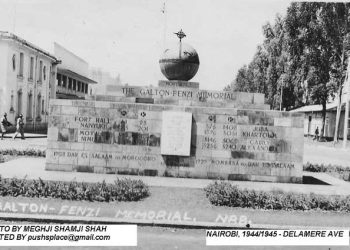In January 1954, General Kariba’s forces launched a series of audacious attacks against British colonial posts, demonstrating their resolve and tactical prowess. They successfully overran many enemy positions, freed Mau Mau captives, and dismantled the enemy’s defenses, reducing the posts to ashes. This period marked a significant escalation in the Kenya Land and Freedom Army’s (KLFA) struggle for independence.
The Battle of Tumutumu Hill
One of the most notable confrontations was the Battle of Tumutumu Hill, which began on Friday, February 8, 1954, and continued fiercely over the weekend, culminating on Tuesday evening. The battle revealed the KLFA forces’ determination and strategic capability in the region. Despite facing a well-armed and trained enemy, the KLFA forces displayed extraordinary gallantry and tactical acumen.
General Kariba’s leadership was instrumental in this battle, alongside other distinguished guerrillas such as Kongania, a woman partisan, and fighters like Kagume, Ngecu, Kaburu, Colonel Baranja, and Brigadier Batu Batu. Unfortunately, both Baranja and Batu Batu became martyrs in this fierce confrontation.
British Forces and Casualties
The British forces suffered significant losses during the battle, with fifteen African soldiers and one European, Sergeant Arthur Crowther, killed. Many enemy soldiers were wounded, including two Europeans, John Richardson and R.M. Tetley. The African soldiers left on the battlefield were severely injured and unable to walk; they were executed by the guerrillas. The KLFA forces seized a considerable number of firearms, bolstering their arsenal for future engagements.
General Tanganyika’s Campaigns
Simultaneously, General Tanganyika led his forces in numerous pitched battles during the fourth KLFA offensive. His notable engagements included the Ruui Ruiru Battle, the Kaibi Battle, the Ndungu’s Fig Tree Battle, and the Karuthi Valley Battle. The latter, fought in broad daylight for three hours, resulted in a decisive victory, forcing the enemy to scatter and retreat.

Legacy of Valor and Sacrifice
The battles led by General Kariba and General Tanganyika in early 1954 were pivotal in the Mau Mau uprising, showcasing the resilience and strategic brilliance of the KLFA fighters. These engagements not only inflicted heavy losses on the British forces but also galvanized the spirit of resistance among the Kenyan people.
Historical accounts of these battles highlight the extraordinary valor and sacrifice of the KLFA fighters. General Kariba and his compatriots remain celebrated figures in Kenya’s struggle for independence, remembered for their unwavering commitment to the cause of freedom.
Conclusion
The battles of January and February 1954, particularly the Battle of Tumutumu Hill, stand as testament to the indomitable spirit of the KLFA fighters under General Kariba’s command. Their legacy continues to inspire future generations in the pursuit of justice and self-determination.












